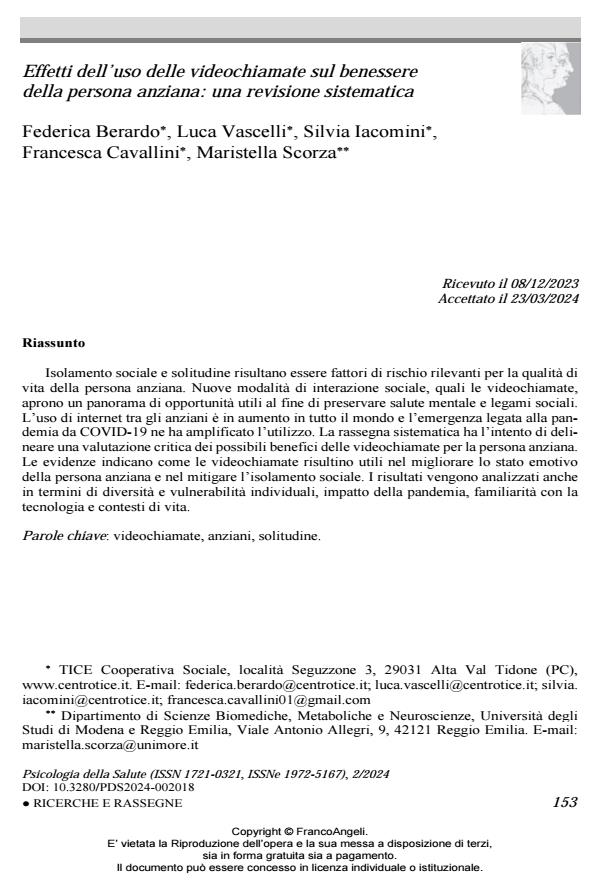Effects of video call use on the well-being of the elderly person: A systematic review
Journal title PSICOLOGIA DELLA SALUTE
Author/s Federica Berardo, Luca Vascelli, Silvia Iacomini, Francesca Cavallini, Maristella Scorza
Publishing Year 2024 Issue 2024/2
Language Italian Pages 23 P. 153-75 File size 404 KB
DOI 10.3280/PDS2024-002018
DOI is like a bar code for intellectual property: to have more infomation
click here
Below, you can see the article first page
If you want to buy this article in PDF format, you can do it, following the instructions to buy download credits

FrancoAngeli is member of Publishers International Linking Association, Inc (PILA), a not-for-profit association which run the CrossRef service enabling links to and from online scholarly content.
Social isolation and loneliness turn out to be significant risk factors for the elderly per-son’s quality of life. New modes of social interaction, such as video calls, open a panorama of useful opportunities in order to preserve mental health and social ties. Internet use among the elderly is increasing worldwide, and the emergence related to the COVID-19 pandemic has amplified its use. The systematic review aims to outline a critical evaluation of the possible benefits of video calling for the older person. Evidence indicates that video calls are useful in improving the elderly person’s emotional state and mitigating social isolation. The results are also analyzed in terms of individual diversity and vulnerability, impact of the pandemic, famili-arity with the technology, and living contexts.
Keywords: video calls, elderly, loneliness
- Autodétermination et pouvoir d’agir dans le monde du handicap Silvia Iacomini, Matilde Fabiani, Luca Vascelli, Federica Berardo, Francesca Cavallini, pp.133 (ISBN:9782810912049)
Federica Berardo, Luca Vascelli, Silvia Iacomini, Francesca Cavallini, Maristella Scorza, Effetti dell’uso delle videochiamate sul benessere della persona anziana: una revisione sistematica in "PSICOLOGIA DELLA SALUTE" 2/2024, pp 153-75, DOI: 10.3280/PDS2024-002018